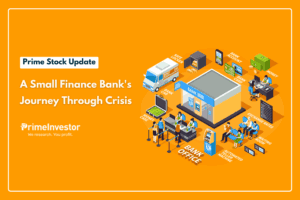If you are a long-term investor, adding midcap funds to your portfolio will drive overall returns. And in such mid-cap exposure, many of you could simply want funds that can deliver returns that are at least better than the mid-cap index, not collapse during market declines, and not be aggressive enough to require smaller allocations and a high risk appetite.

DSP Midcap fits this requirement. DSP Midcap suits any investor with a minimum timeframe of at least 5 years. The fund forms part of our Prime Funds list and finds a place in one of our long-term Prime Portfolios as well. If you have a very high risk appetite, then you might want to combine this midcap fund with more aggressive midcap funds to form the mid-cap exposure. Of course, given that it is a midcap fund, avoid going overboard on allocation to this fund.
Delivers above average returns
In the mid-cap space, there has always been a churn in the list of consistent performers. Midcap funds seldom manage to hold fort. If that is a given, there is also a more recent development of mid-cap funds increasingly struggling to beat the Nifty Midcap 100 consistently.
DSP Midcap is among the few that are the more consistent performers. The fund has not always ranked at the top. But it has always been better than the average in the midcap category in the longer term. Rolling 3-year returns over a six-year period has the fund beating the category average all the time, a record that’s matched only by Kotak Emerging Equity.
Against the Nifty Midcap 100 and the stiffer Nifty Midcap 150, too, the fund holds a reasonable consistency record. It has not always been able to beat the index; rolling 1-year returns since 2015 has the fund beating the Nifty Midcap 150 about 67% of the time and the Nifty Midcap 100 78% of the time.
But towards the end of 2018 and onwards, its performance has considerably picked up to the point where the fund’s 1-year returns were anywhere between 5 and 15 percentage points above the Nifty Midcap 100. The fund’s 3-year returns too are well above the index.
Contains downsides better than other midcap funds
DSP Midcap’s ability to stay above the category average, as well as the strong recent performance is thanks in part to its ability to contain downside better than the benchmark and peers.
For example, the average 1-year loss that DSP Midcap suffered since 2015 was 7.5%. For the Nifty Midcap 150, the average loss was 10.3%. On a 3-year basis since 2015, the fund had 52 instances of losses. The Nifty Midcap 150 had close to double the number of instances. Using the downside capture ratio, which measures the proportion of a fund’s loss to the index’s loss, DSP Midcap scores well above peers. It is next only to Axis Midcap (which takes large cash calls) in downside capture.
When it comes to participating on market rallies, though, DSP Midcap is not the best. Other midcap funds such as Kotak Emerging and Invesco Midcap score better here, but then they are also comparatively more aggressive due to the small-cap exposure. However, DSP Midcap still beats the Nifty Midcap 150 on market upswings – it just does not outshine the index by a large margin like many peers do.
But the strong downside containment and the reasonable upside capture allows it to clock a satisfactory consistent record. It also makes the fund suitable for most long-term portfolios. Its volatility and risk-adjusted returns are better than peers. DSP Midcap does not dip much into the small-cap segment and remains focused only on the mid-cap space.
Picks fundamentally sound companies
DSP Midcap holds a diffused portfolio, which most midcap funds do. Its top 10 stocks account for less than 40% of its portfolio and individual allocations are not high.
DSP Midcap looks for quality companies that have clocked steady and strong growth in revenues, earnings, and profitability as well as delivered superior return on equity, generate good cash flows, and have a strong management. Of course, this also more or less means that the fund will hold stocks with high valuations. But in the mid-cap space, given that quality can be harder to find and is actually desirable, higher valuations is not too much of a risk.
In any case, the fund does book profits in stocks that have rallied sharply. Over the past few months, for example, the fund booked profits in stocks such as Divis Labs and Alkem Labs. Earlier this year, it exited stocks such as Apollo Tyres, Aarti Industries and Bayer Crop Science.
But for the most part, DSP Midcap largely follows a buy-and-hold strategy, which is natural given the metrics it looks for in companies and the nature of the companies. Its portfolio churn is below the category average, even excluding the funds with extremely high churns. Of its current portfolio, over half have been part of the portfolio for at least two years, though allocations of course have changed. The pharma sector holds a big portfolio share, as does industrial and capital goods stocks.
Over the past few months, the fund has bought into stocks such as AIA Engineering, Bharat Forge, SRF, Finolex Industries, Sterlite Technologies, and so on. Financials are another big allocation, with the fund upping share in banks and financials through stocks such as Cholamandalam Investment, SBI Life Insurance, and City Union Bank. Offsetting the cyclical exposure is consumer stocks, with those such as Sheela Foam, Bata India, Jubilant FoodWorks and so on. The fund’s portfolio, therefore, is balanced across segments.
DSP Midcap’s fund size makes it the second-largest midcap fund after HDFC Midcap Opportunities. But the size is still manageable at Rs 7,883 crore compared to the HDFC fund’s Rs 22,125 crore. The fund’s portfolio liquidity is similar to smaller-sized peers; the time taken to theoretically sell its entire portfolio has been less than 20 days even during the March market rout. The fund’s managers are Vinit Sambre, Resham Jain, and Jay Kothari.
Here’s a list of all the top mid cap mutual funds
Also Read : A Nifty MidCap Index Fund that challenges the Index.




22 thoughts on “Prime Recommendation: A midcap fund for any long-term portfolio”
What’s your view on the recent underperformance of this scheme? I understand 1 year is too short to judge – but 17% lower than the benchmark seems a bit much?
We haven’t changed our call on the fund. Almost all mid-cap funds are currently trailing the index by that extent; some are more. That’s partly because of the nature of the rally. Read the section on aggressive funds here: https://www.primeinvestor.in/best-mutual-funds-quarterly-review-july-2021/ – thanks, Bhavana
Hi, If I have L&T midcap and HDFC midcap (as part of 2 separate portfolios), would you recommend replacing any of these with DSP Midcap, or can the above two funds be continued with? Thanks!
Hello sir,
Please use our MF Review Tool to know if your fund is a buy, sell, or hold. You do not need to add/remove funds that we analyse if your existing fund is also a quality one. In case of sells, you may reinvest in this fund if it fits your portfolio. If it’s a hold, and you have additional investments to make, then you can consider DSP Midcap, if it fits your portfolio.
Thanks,
Bhavana
Hello,
Could you please guide us on account opening for mutual funds. I want to start investing, but only in direct plans as regular plans have higher expense ratio
Which platform offers the convenience to buy direct funds from different AMC’s? I enquired with ICICI, Sharekhan, HDFC, fundsindia, scripbox and others they all offer regular funds
Please advice
thank you
Hello sir,
Please read this article, where the topic is dealt with in detail. The comments section additionally has a lot of user feedback. https://www.primeinvestor.in/choosing-the-best-online-mutual-fund-platform/
Thanks,
Bhavana
Hello Ma’am,
Please do review Mirae Asset Midcap fund. The fund manager is the co fund manager for Mirae Asset Emerging Bluechip fund too.
Hi, Nice article on DSP Midcap fund. Just wondering rationale of recommending DSP Midcap instead of Axis Midcap. Axis Midcap performance seems better or par on 1/3/5 year basis and it las low expense ratio too.
Thanks
Hello sir,
Axis Midcap manages this by moving to cash and markets have been poor for midcaps since 2018. Not that it’s a bad strategy, but Axis Small Cap also follows the same and has a similar stock-picking style as well. We have Axis Small Cap in the same group. So if we have both funds, chances are that it would lead to duplication in portfolios; we also have Axis Bluechip which is also similar in stock picking philosophies. In Prime Funds, we try to mix different styles so that a portfolio can be better diversified. There aren’t that many small-cap options to work with, but in the mid-cap space there are good, quality funds outside Axis Midcap. Axis Midcap has also not been a great performer all the time; it has only picked up in the past couple of years.
Thanks,
Bhavana
Nice Article!
I have some reservations when you claim it to be a part of Long Term Portfolio. Few years back Franklin Prima was supposed to the best in the category in terms consistency and drawdown, later it was replaced by L&T Midcap and then Kotak Emerging Equity and DSP. It am pretty sure there would be another one in next one year for sure. I am failed to understand how can an active fund be the best option specifically in Long Term Portfolio. Yes, I am pointing to Fund Manager Risk. Futher, expense ratio takes a toll when the active fund stops giving its benchmark returns.
MO Midcap 150 like you have talked about in another article, together with tactical calls is not a far better option to go with?
Hello sir,
That’s pretty much the norm for most mid-cap funds…they rise and fall, unfortunately. But DSP Midcap has not been a topper anyway – it’s good aspect is that it has stayed above average always, which other funds have not. The Nifty Midcap 150 is a good option – but not sure what you mean by tactical calls. Do you mean directly buying stocks? It will certainly work, if you get the calls more or less right. Or tactical calls on funds themselves?
But if you’re willing to take on a little bit of managing your portfolio for better returns, active midcap funds will still help. The funds don’t need changing every year 🙂 And unless DSP Midcap’s strategy changes, it appears well placed to continue to deliver in the long term. Stocks that pass ROE, cash flow filters etc generally come out on top, over time.
Thanks,
Bhavana
DSP fund has been consistent in the past but the question is how long will it contain the consistency.
Tactical calls – tactically exit and entry into Midcap 150 index is significantly better option in risk and reward with minmal hassles. Based on hindsight analysis, if one has followed above strategy from March 2014 would have got CAGR 21% post tax returns with absolute downside protection. Cost of investment is lowest as well.
I dont agree to the fact DSP midcap or any other active fund in the category for that matter can be option in long term portfolio which is the only reservation I have on this.
Franklin Prima is a perfect example with us.
Passive investing is a way to go. Active funds will rise and fall and even collaspe as the weather changes.
Hello sir,
Taking tactical allocations to the mid-cap index is fine theoretically. The actual implementation in terms of timing is the question. Other than end-2017 when it was very obvious that mid-caps were just too expensive, the correct exit/entry calls are clear only in hindsight. Timing is very, very difficult to get right however experienced an investor is. In that way, in our opinion, it’s better to keep the Nifty Midcap 150 as part of your portfolio, and use a blend of moderate/high risk allocations to make the returns.
Thanks,
Bhavana
Are you recommending to go with DSP Midcap with SIP route and continue holding it for 5-7 years?
Hello sir,
Guess I wasn’t clear in my earlier response. I meant – taking tactical calls on mid-cap is hard. It’s easier and better to maintain a portfolio allocation to moderate risk (large-cap based funds) and high risk funds (mid-cap and small-cap based funds). You can have such moderate and high risk allocations using index/passive funds or active funds or a combination of passive and active.
Thanks,
Bhavana
I agree with PRKRVARSHNEY. In summary, these recommendations need to be consistent and for the longest possible period to maximize the returns. In other words, if you expect us to invest in this midcap, I would like to stay invested for 5 years. So the question is, will DSP give the best if I hold it for 5 years? Is that your message? If that is not your message, then I would not like to buy it or switch from my existing midcap. Also, I have seen several suggestions in one particular category – which makes me wonder how I use your subscription.
Hello sir,
When we make recommendations, we do not look at them with a quarter’s perspective or a year. In our equity recommendations, we look for funds that we think can be part of long-term portfolios – this call is based on how steady performance has been, why, different aspects of it like volatility, upside performance, downside containment etc., as well as strategy. So we don’t recommend funds with the intention of changing it next year. As mentioned in the post, DSP Midcap is not a category topper – it is above average, and has been above average, and beaten the index as well, and in this way, has managed to deliver consistent performance.
You do not have to switch from your existing mid-cap fund into this one. The fund you have could still be a good performer, since DSP Midcap is not the only investment-worthy fund in the category. You can use our review tool to check our call on your fund.
We give a choice of different funds in Prime Funds because an investor needs choice. For a rounded portfolio, it is good to hold funds that manage their portfolios in different ways, so you’re not concentrated on a particular style. Prime Funds under each classification have different strategies – some are more aggressive, some are less, some are growth, some value, some blended. Depending on the size of your investment, you’d also need more than 3-4 funds. We’ve struck a balance between giving enough options that an investor can find a fund to fit the need, and giving so many that one gets confused.
Thanks,
Bhavana
My Motilal Oswal Multicap 35 scheme has given only 4.5 percent since 2015. Should I divert this fund to any other scheme
Hello sir,
Please use our MF Review tool to get our view on your fund…but that aside, DSP Midcap is not a replacement for Motilal Multicap. It’s much, much higher risk. Motilal Multicap is predominantly large-cap oriented – of course, we don’t know what the fund will do given SEBI’s new multicap rules, so until then it is better to wait and watch this fund. So unless you’re low on mid-cap allocations and want to increase this exposure, don’t divert from a large-cap oriented fund into a fully midcap fund. DSP Midcap contains downsides compared to midcap indices and midcap funds. It will still fall more than large-caps.
Thanks,
Bhavana
Just one question out of curisity, why I should pay 0.70% more expenses and invest when better Prime Fund option of MO Nifty Midcap 150 Index Fund is available as well as recommended by you?
Hello sir,
That question applies to any active fund 🙂 But since this fund is able to beat the Nifty Midcap 150, you can get better performance. We’re not yet at the stage where funds lag the index often enough – like it is with largecap funds – that it makes better sense to be investing in the index. Returns are post expenses for funds.
Thanks,
Bhavana
ok. thanks.
Comments are closed.